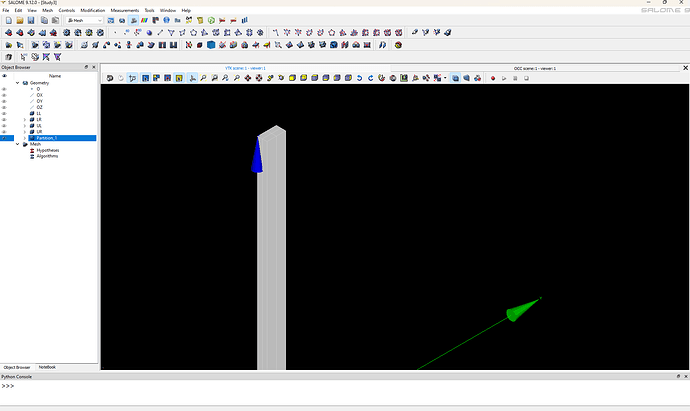Create Mesh:
Name: Mesh_1
Geometry: Partition_1
Mesh Type: Hexahedral
Algorithm: Hexahedron i,j,k
Hypothesis: Default
Add. Hypothesis: None
Apply
The UL,UR, LL, LR represent the upper left, upper right, lower left, lower right components of a 4"x8"x120" long beam with a rectangular cross section. A partition was created with those four components.
So far the resulting mesh seems to only contain nodes after being computed with parameters shown. This seems a bit strange to me since that usually when Solome successfully builds a mesh I can turn on the viewing and see the faces of hexahedrons.
So far based from the number of nodes I can see that the hexahedron mesh would be nowhere near dense enough for me to use it yet.
Could I get some assistance how to densify to hexahedrons of size for example .01 untis in all directions, how to get that working for such a cuboid with Salome Platform?
